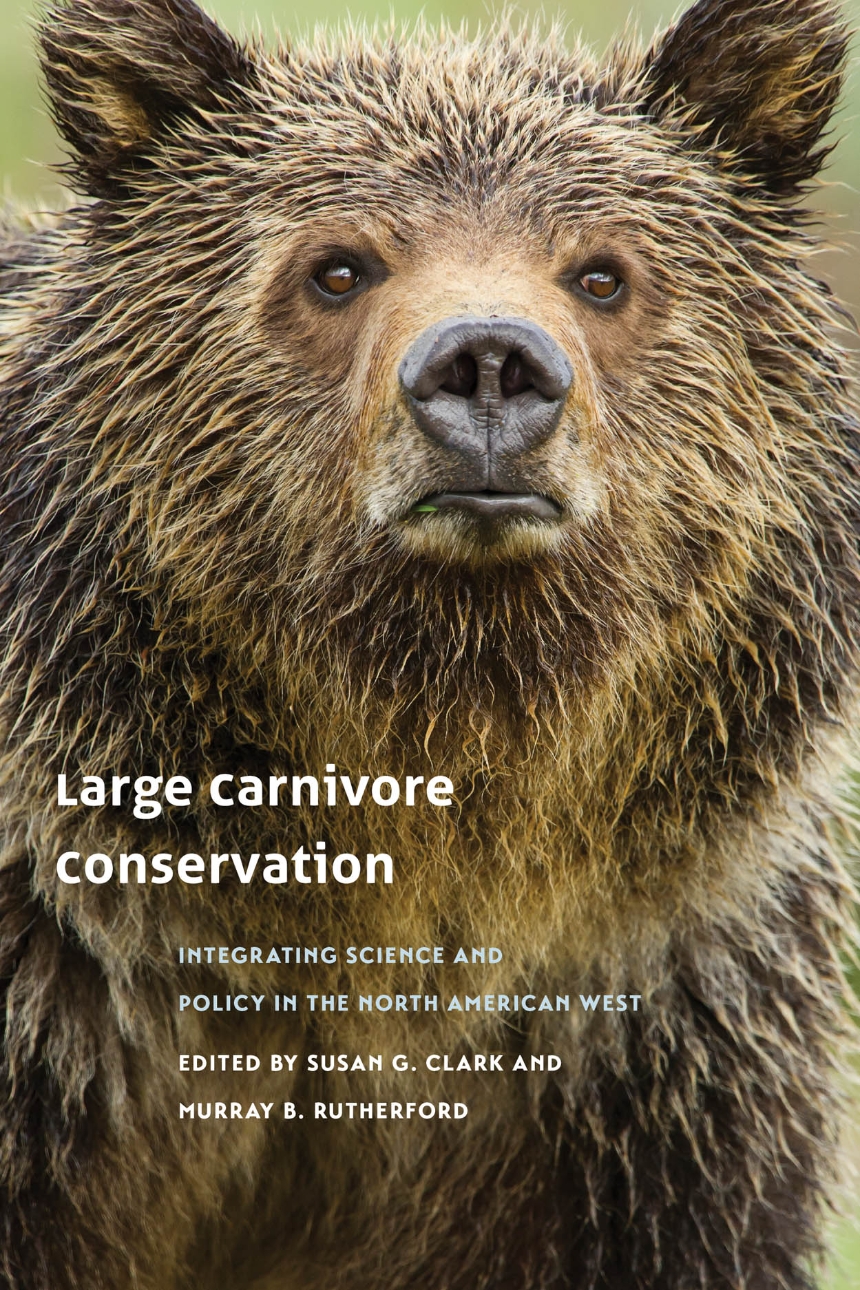Large Carnivore Conservation
Integrating Science and Policy in the North American West
Large Carnivore Conservation
Integrating Science and Policy in the North American West
In combining real-world examples with discussions of conservation and policy theory, Large Carnivore Conservation not only explains how traditional management approaches have failed to meet the needs of all parties, but also highlights examples of innovative, successful strategies and provides practical recommendations for improving future conservation efforts.
416 pages | 1 map, 5 line drawings, 3 tables | 6 x 9 | © 2014
Biological Sciences: Behavioral Biology, Conservation
Reviews
Table of Contents
Preface
Acknowledgments
1 Large Carnivores, People, and Governance
Susan G. Clark, Murray B. Rutherford, and David J. Mattson
Appendix. Criteria for Evaluating Decision Processes
2 State-Level Management of a Common Charismatic Predator: Mountain Lions in the West
David J. Mattson
Appendix. Decision Activities, Standards, and Effectiveness in Mountain Lion Conservation in the West
3 Wolves in Wyoming: The Quest for Common Ground
Rebecca Watters, Avery C. Anderson, and Susan G. Clark
Appendix 3.1. Decision Activities, Standards, and Effectiveness in Wolf Management in Two Wyoming Communities
Appendix 3.2. Tests of the Common Interest
4 Science-Based Grizzly Bear Conservation in a Co-Management Environment: The Kluane Region Case, Yukon
Douglas Clark, Linaya Workman, and D. Scott Slocombe
Appendix 4.1. The Grizzly Bear Management Dialectic in the Southwest Yukon
Appendix 4.2. Problems with the Decision Process from the Kluane Grizzly Bear Case and Recommended Improvements
5 Wolf Management on Ranchlands in Southwestern Alberta: Collaborating to Address Conflict
William M. Pym, Murray B. Rutherford, and Michael L. Gibeau
Appendix 5.1. Tests of the Common Interest
Appendix 5.2. Decision Activities, Standards, and Effectiveness in the Central Rockies Wolf Project/Southern Alberta Conservation Cooperative and the Oldman Basin Carnivore Advisory Group
6 Human–Grizzly Bear Coexistence in the Blackfoot River Watershed, Montana: Getting Ahead of the Conflict Curve
Seth M. Wilson, Gregory A. Neudecker, and James J. Jonkel
Appendix 6.1. Likert-Scaled Statements Regarding Perceptions of Grizzly Bear Activity and Appropriate Landowner/Resident Behaviors in the Blackfoot Watershed, Montana
Appendix 6.2. The Relative Difficulty of Important Issues for Improving Human–Grizzly Bear Coexistence
Appendix 6.3. Decision Activities, Standards, and Effectiveness for Grizzly Bear Management in the Blackfoot River Watershed, Montana
Appendix 6.4. A Continuum of Local Involvement in Grizzly Conservation
7 Collaborative Grizzly Bear Management in Banff National Park: Learning from a Prototype
J. Daniel Oppenheimer and Lauren Richie
Appendix 7.1. Overview of Grizzly Bear Management in Banff National Park, Alberta, Canada
Appendix 7.2. Decision Activities, Standards, and Effectiveness in the Grizzly Bear Dialogue Group
8 Large Carnivore Conservation: A Perspective on Constitutive Decision Making and Options
Susan G. Clark, David N. Cherney, and Douglas Clark
Appendix. Common Recurring Weaknesses in Constitutive Decision Making
9 The North American Model of Wildlife Conservation: An Analysis of Challenges and Adaptive Options
Susan G. Clark and Christina Milloy
Appendix. Claims, Values, and Decision Activities in the Policy Process of the North American Model of Wildlife Conservation
10 Complexity, Rationality, and the Conservation of Large Carnivores
David J. Mattson and Susan G. Clark
Appendix. Queries and Graphics for Synoptically Appraising Conservation Cases
11 Improving Governance for People and Large Carnivores
Murray B. Rutherford and Susan G. Clark
Appendix. Tests of the Common Interest
Contributors
Index
